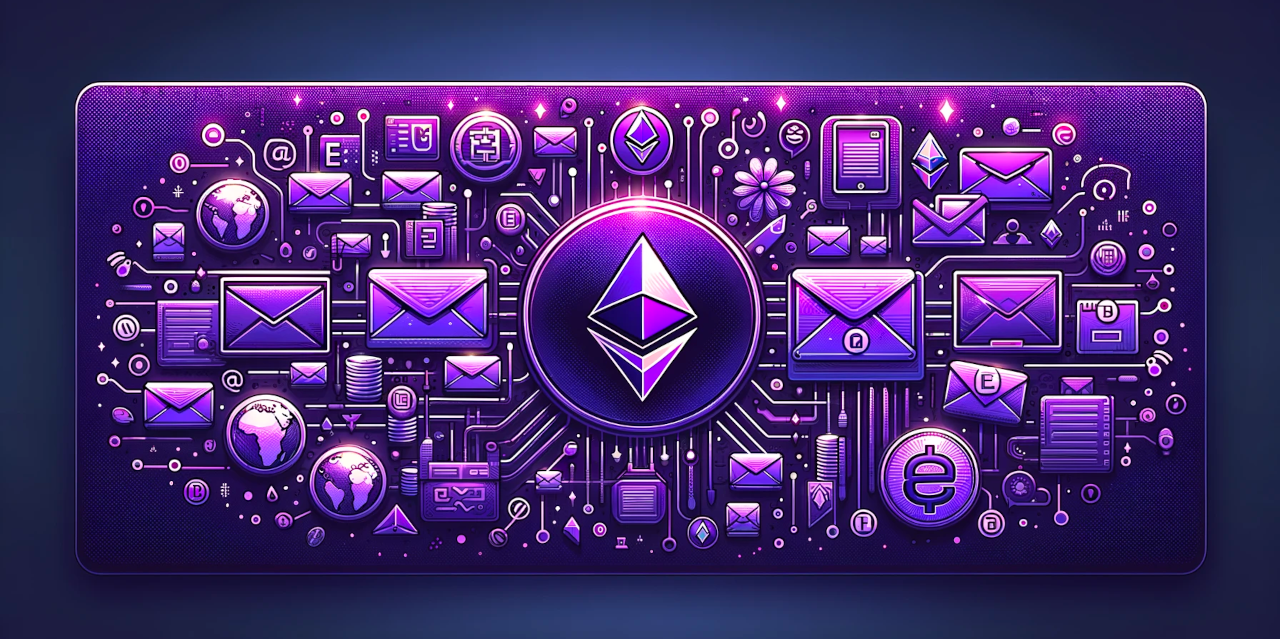Onboarding Traditional Users to Web3
4 comments
Let's face it: the biggest hurdle to web3 mass adoption isn't the rollercoaster of cryptocurrency prices, it's not the maze of regulations, and it’s not even the environmental debates around block validation. We've found ways around these – stablecoins smooth out the wild price swings, regulated entities are dipping their toes into web3 with their own offerings, and the shift from power-hungry Proof of Work (PoW) to the more eco-friendly Proof of Stake (PoS) and its cousins like Delegated Proof of Stake (DPoS) have eased many environmental concerns.
But here’s the kicker – the real roadblock is, well, a bit of human nature: laziness. Not pointing fingers here, but let's be real, exerting effort isn’t exactly our favorite pastime. People will dive deep when they really care about something, but getting to that point of curiosity and interest? That's the hard part. The catch is, most folks won’t see the true value of blockchain tech until they’ve taken the plunge themselves. And with the noise from online chatter, the media, and government takes, those genuine advantages stay buried.
Mix this inherent laziness with web3’s notoriously clunky user experience, and you’ve got a recipe for widespread apathy. Yep, you heard that right – web3’s user experience is far from friendly.

The UX Problem
When we ponder, "What's the entry point to blockchain?", we're often funneled towards Bitcoin or Ethereum. But let’s zero in on Ethereum for this discussion, encompassing its side-chains and Layer 2 solutions. While Bitcoin has its value, Ethereum acts as a sprawling ecosystem, beckoning users into its fold.
Wallets
First off, the wallet situation is daunting. Private keys, mnemonic phrases—these are the vault combinations to your digital wealth, and they're as intimidating as they are critical. Lose them, and you're locked out forever. It's a high-stakes game where the barrier to entry isn't just technical; it's psychological.
Gas Fees
Then there's the matter of gas fees on Ethereum. Transaction costs can swing wildly, turning simple actions like sending tokens or interacting with dApps into costly affairs. For new users, this unpredictability is more than just a nuisance; it's a blockade.
Signatures & Meta Transactions
Even when we sidestep gas fees through clever solutions like signatures, we're met with a user experience that's, frankly, underwhelming. At its best, you're signing a neatly formatted message. More often, you're confronted with a JSON blob or, in the worst cases, an incomprehensible string of hex. While these signatures might save on gas fees from the user's perspective, the cost for companies to process these on the blockchain remains steep.
Fractured Ecosystem
And let's talk about the ecosystem's fragmentation. Moving between blockchains might mitigate gas fees, but it wreaks havoc on the wallet experience. Needing different cryptocurrencies for gas on various networks, and possibly having to bridge assets, only adds layers of complexity.
The token landscape doesn't help either. With a myriad of stablecoins and wrapped tokens across chains, users find themselves in a constant juggle. Swapping DAI for USDC for one app, then needing renBTC instead of WBTC for another, introduces a level of friction that's absent in traditional banking. In the digital realm, currency should be fluid, but instead, we're navigating a maze of arbitrary barriers.

UX Solutions
Case Study: HIVE
Hive, originally springing from the same roots as STEEM, presents a compelling case study in addressing the labyrinthine UX challenges inherent in web3. Its nuanced approach to wallet management and transaction fees underscores a significant leap towards user-friendly blockchain interactions.
The Wallet Innovation
Hive's novel solution to the private key conundrum, with its layered access keys, offers a blueprint for security without overwhelming the user. The separation into Master and Posting keys simplifies user interaction by demarcating clear roles and risks for each key type. This methodology, coupled with the introduction of user-friendly handles, substantially lowers the barriers to entry for non-technical users.
In traditional blockchain setups, users grapple with cumbersome alphanumeric strings. Hive, by contrast, embeds a sense of identity and ease, aligning more closely with web2 norms without compromising on the decentralized ethos that web3 champions.
Tackling Gas Fees
The gas fee structure is often a critical stumbling block in the user's journey through blockchain landscapes. Hive's audacious move to a near-zero fee model, despite its complexities, showcases a deliberate pivot towards enhancing user experience. This strategy effectively sidesteps the deterrent of fluctuating transaction costs that can alienate users during peak times—a notable issue on platforms like Ethereum.
Hive's implementation of mana and resource credits, though adding a layer of complexity, ultimately serves to maintain a barrier against spam while preserving the platform's user-centric approach. It's a balancing act that not only maintains network integrity but also ensures that users remain engaged and unburdened by prohibitive costs.

Case Study: MagicLink
MagicLink presents a novel approach to simplifying wallet management for Ethereum and other EVM-compatible blockchains. By utilizing an email-based signup process, it significantly lowers the entry barrier for users unfamiliar with blockchain technology. The magic behind MagicLink is its ability to generate and manage a wallet without the user ever needing to deal with private keys directly.
Users simply sign up using their email, and MagicLink handles the complexities behind the scenes. It's a game-changer for user experience, offering a level of convenience similar to traditional web services. While it might seem like a security concern, MagicLink ensures that they do not have access to the user's private keys. This claim raises curiosity and skepticism about how they achieve such security without compromising the fundamental principles of self-custody in blockchain, but that is a topic for a future discussion.
Despite the innovation, it's essential to remember that the security of a MagicLink wallet is as strong as the security of the associated email account. If the email is compromised, so too could be access to the wallet. This highlights the need for robust email security practices, but it also opens up a conversation about balancing ease of use with security in the pursuit of broader web3 adoption.

Case Study: Connext
Cross-chain solutions like Connext aim to solve the fragmentation of blockchain ecosystems by enabling seamless transfers and interactions across different chains. This not only enables a new type of bridge which can solve the liquidity issues of older models, but it also allows for true cross-chain interactions, such as cross-chain voting in a cross-chain DAO. In theory, using Connext contracts, communicating with contracts on another chain is relatively easy.
However, despite their potential, these solutions come with new inherent UX challenges:
Speed: Transactions that span across multiple chains can be slower than those confined to a single blockchain. Settlements must occur on both the origin and target chains, introducing delays.
Cost: Cross-chain operations require fees to cover the transactions on both the source and destination chains. This can accumulate, especially for operations that are not purely signature-based. Users may need to hold the native cryptocurrency of both chains to pay for gas fees, complicating the user experience.
Complexity: The requirement to manage assets and interactions across multiple blockchains can be daunting for users, particularly those new to web3. The need for different wallets RPC connections or to understand the specifics of each blockchain adds layers of complexity.

Potential UX Solutions
The transition towards web3 has opened a world of possibilities, from decentralized finance to the ownership of digital assets through NFTs. Yet, the path to mass adoption is paved with user experience challenges that can deter the average person from diving into this promising ecosystem. Addressing these challenges head-on with innovative solutions is crucial for onboarding traditional users to web3. Here are some proposed solutions that could significantly enhance the user experience:
Integration of Web3 Wallets into Native Platforms
Companies like Apple and Google have the potential to drive web3 adoption forward by integrating web3 wallets into their existing wallet applications. This approach could abstract away the complexities of managing private keys while still providing users the option to have full control over their keys when needed. By leveraging their widespread user base and trust, these tech giants could introduce billions to web3, making the entry as simple as an update to their existing systems.
Standardization and Improvement of Signature Formatting
Currently, the experience of signing transactions can be confusing due to inconsistent and sometimes cryptic presentation of what's being signed. A more unified approach to signature styling could greatly improve user understanding and comfort. By developing standards that allow app developers to specify how signatures should be displayed, users could enjoy a clearer and more consistent experience across different wallets and applications. This would bridge the gap between the developers' intent and the user's understanding, ensuring transparency and trust in every interaction.
Whitelisting Applications for Auto-signing
Requiring a signature for every action can become tedious, especially for frequent and low-risk operations. Introducing a feature where users can whitelist trusted applications, contracts, or specific types of transactions could streamline the user experience. This would allow automatic signing of transactions within defined parameters, reducing friction and enhancing the user's interaction with web3 applications. Of course, this would need to be implemented with robust security measures to protect users from potential abuses.
Universal Stablecoin or Seamless Stablecoin Swapping
The fragmentation of stablecoins (DAI, USDC, etc.) complicates transactions across different platforms and tokens. A universal stablecoin or a mechanism for seamless, feeless swapping between stablecoins would greatly simplify transactions. This would allow users to transact freely without worrying about the specific type of stablecoin required for a transaction. While achieving a perfectly pegged universal stablecoin is challenging, exploring interoperability and fungibility between existing stablecoins could offer a practical step towards minimizing user confusion and transaction friction.
Implementing these solutions would address some of the core user experience challenges in web3, making it more accessible and appealing to traditional users. Each solution aims to reduce complexity, increase trust, and streamline interactions within the web3 ecosystem, paving the way for its widespread adoption. As the web3 space continues to evolve, focusing on user-centric innovations will be key to unlocking its full potential for a global audience.

Navigating the future of web3 involves not just appreciating its technological marvels but also confronting its usability challenges head-on. This blog has journeyed through the maze of user experience issues that stand between traditional users and the vast potential of blockchain technology. By highlighting innovative solutions and case studies, we've glimpsed what a more accessible web3 might look like — one where barriers to entry are not just lowered but obliterated.
As we move forward, the collective effort of the community, developers, and even tech giants will be pivotal in refining these solutions and introducing new ones. The goal is clear: to mold web3 into a space that is not only powerful and decentralized but also intuitive and user-friendly. This transformation is crucial for unlocking the full spectrum of web3's benefits for everyone, from the tech-savvy early adopters to the curious newcomers.

Disclaimer: As an engineer at Colle, I'm extending an exclusive invite to the Hive community to join Colle. Colle is a invite only luxury watch marketplace operating on the Polygon network. Signing up is easy via email, MetaMask, or WalletConnect.
Join us through this invitation link.


Comments